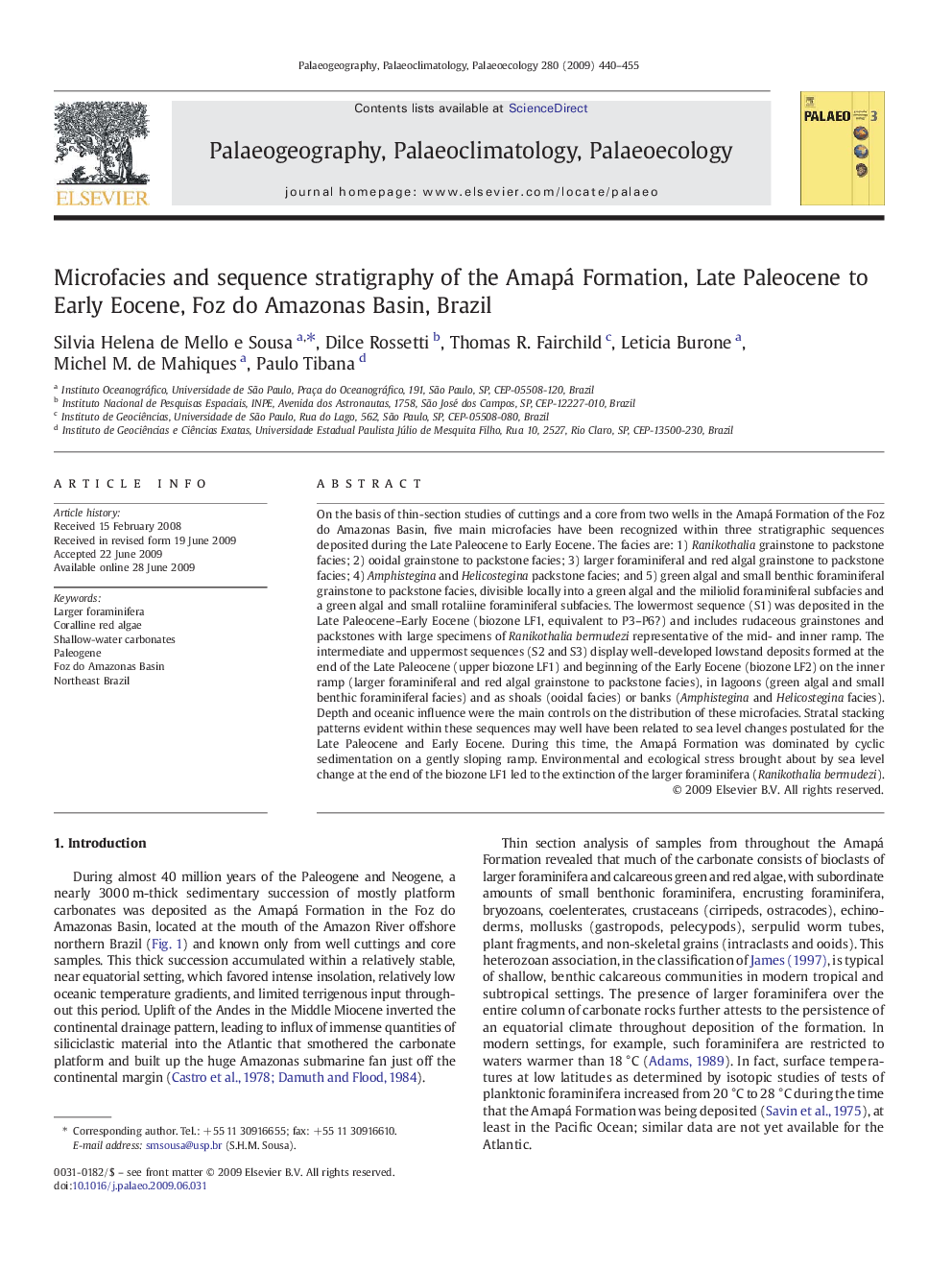| کد مقاله | کد نشریه | سال انتشار | مقاله انگلیسی | نسخه تمام متن |
|---|---|---|---|---|
| 4468003 | 1622296 | 2009 | 16 صفحه PDF | دانلود رایگان |

On the basis of thin-section studies of cuttings and a core from two wells in the Amapá Formation of the Foz do Amazonas Basin, five main microfacies have been recognized within three stratigraphic sequences deposited during the Late Paleocene to Early Eocene. The facies are: 1) Ranikothalia grainstone to packstone facies; 2) ooidal grainstone to packstone facies; 3) larger foraminiferal and red algal grainstone to packstone facies; 4) Amphistegina and Helicostegina packstone facies; and 5) green algal and small benthic foraminiferal grainstone to packstone facies, divisible locally into a green algal and the miliolid foraminiferal subfacies and a green algal and small rotaliine foraminiferal subfacies. The lowermost sequence (S1) was deposited in the Late Paleocene–Early Eocene (biozone LF1, equivalent to P3–P6?) and includes rudaceous grainstones and packstones with large specimens of Ranikothalia bermudezi representative of the mid- and inner ramp. The intermediate and uppermost sequences (S2 and S3) display well-developed lowstand deposits formed at the end of the Late Paleocene (upper biozone LF1) and beginning of the Early Eocene (biozone LF2) on the inner ramp (larger foraminiferal and red algal grainstone to packstone facies), in lagoons (green algal and small benthic foraminiferal facies) and as shoals (ooidal facies) or banks (Amphistegina and Helicostegina facies). Depth and oceanic influence were the main controls on the distribution of these microfacies. Stratal stacking patterns evident within these sequences may well have been related to sea level changes postulated for the Late Paleocene and Early Eocene. During this time, the Amapá Formation was dominated by cyclic sedimentation on a gently sloping ramp. Environmental and ecological stress brought about by sea level change at the end of the biozone LF1 led to the extinction of the larger foraminifera (Ranikothalia bermudezi).
Journal: Palaeogeography, Palaeoclimatology, Palaeoecology - Volume 280, Issues 3–4, 15 September 2009, Pages 440–455